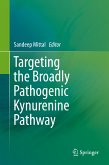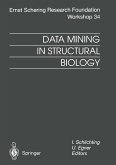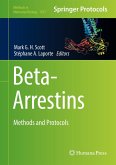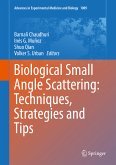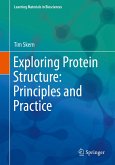Integrative Structural Biology with Hybrid Methods (eBook, PDF)
Redaktion: Nakamura, Haruki; Markley, John L.; Burley, Stephen K.; Kleywegt, Gerard
72,95 €
72,95 €
inkl. MwSt.
Sofort per Download lieferbar

36 °P sammeln
72,95 €
Als Download kaufen

72,95 €
inkl. MwSt.
Sofort per Download lieferbar

36 °P sammeln
Jetzt verschenken
Alle Infos zum eBook verschenken
72,95 €
inkl. MwSt.
Sofort per Download lieferbar
Alle Infos zum eBook verschenken

36 °P sammeln
Integrative Structural Biology with Hybrid Methods (eBook, PDF)
Redaktion: Nakamura, Haruki; Markley, John L.; Burley, Stephen K.; Kleywegt, Gerard
- Format: PDF
- Merkliste
- Auf die Merkliste
- Bewerten Bewerten
- Teilen
- Produkt teilen
- Produkterinnerung
- Produkterinnerung

Bitte loggen Sie sich zunächst in Ihr Kundenkonto ein oder registrieren Sie sich bei
bücher.de, um das eBook-Abo tolino select nutzen zu können.
Hier können Sie sich einloggen
Hier können Sie sich einloggen
Sie sind bereits eingeloggt. Klicken Sie auf 2. tolino select Abo, um fortzufahren.

Bitte loggen Sie sich zunächst in Ihr Kundenkonto ein oder registrieren Sie sich bei bücher.de, um das eBook-Abo tolino select nutzen zu können.
Presents impact of the integrative structural biology
Provides Future perspective of the hybrid methods and their applications
Covers detailed description of experimental and computational methods in the hybrid methods
- Geräte: PC
- ohne Kopierschutz
- eBook Hilfe
- Größe: 6.3MB
Andere Kunden interessierten sich auch für
![Targeting the Broadly Pathogenic Kynurenine Pathway (eBook, PDF) Targeting the Broadly Pathogenic Kynurenine Pathway (eBook, PDF)]() Targeting the Broadly Pathogenic Kynurenine Pathway (eBook, PDF)112,95 €
Targeting the Broadly Pathogenic Kynurenine Pathway (eBook, PDF)112,95 €![Data Mining in Structural Biology (eBook, PDF) Data Mining in Structural Biology (eBook, PDF)]() Data Mining in Structural Biology (eBook, PDF)72,95 €
Data Mining in Structural Biology (eBook, PDF)72,95 €![Beta-Arrestins (eBook, PDF) Beta-Arrestins (eBook, PDF)]() Beta-Arrestins (eBook, PDF)112,95 €
Beta-Arrestins (eBook, PDF)112,95 €![Fundamentals of Protein Structure and Function (eBook, PDF) Fundamentals of Protein Structure and Function (eBook, PDF)]() Engelbert BuxbaumFundamentals of Protein Structure and Function (eBook, PDF)72,95 €
Engelbert BuxbaumFundamentals of Protein Structure and Function (eBook, PDF)72,95 €![Biological Small Angle Scattering: Techniques, Strategies and Tips (eBook, PDF) Biological Small Angle Scattering: Techniques, Strategies and Tips (eBook, PDF)]() Biological Small Angle Scattering: Techniques, Strategies and Tips (eBook, PDF)120,95 €
Biological Small Angle Scattering: Techniques, Strategies and Tips (eBook, PDF)120,95 €![Surface Chemistry of Biological Systems (eBook, PDF) Surface Chemistry of Biological Systems (eBook, PDF)]() Surface Chemistry of Biological Systems (eBook, PDF)40,95 €
Surface Chemistry of Biological Systems (eBook, PDF)40,95 €![Exploring Protein Structure: Principles and Practice (eBook, PDF) Exploring Protein Structure: Principles and Practice (eBook, PDF)]() Tim SkernExploring Protein Structure: Principles and Practice (eBook, PDF)64,95 €
Tim SkernExploring Protein Structure: Principles and Practice (eBook, PDF)64,95 €-
-
-
Presents impact of the integrative structural biology
Provides Future perspective of the hybrid methods and their applications
Covers detailed description of experimental and computational methods in the hybrid methods
Provides Future perspective of the hybrid methods and their applications
Covers detailed description of experimental and computational methods in the hybrid methods
Dieser Download kann aus rechtlichen Gründen nur mit Rechnungsadresse in A, B, BG, CY, CZ, D, DK, EW, E, FIN, F, GR, HR, H, IRL, I, LT, L, LR, M, NL, PL, P, R, S, SLO, SK ausgeliefert werden.
Produktdetails
- Produktdetails
- Verlag: Springer Nature Singapore
- Seitenzahl: 272
- Erscheinungstermin: 8. Januar 2019
- Englisch
- ISBN-13: 9789811322006
- Artikelnr.: 54889579
- Verlag: Springer Nature Singapore
- Seitenzahl: 272
- Erscheinungstermin: 8. Januar 2019
- Englisch
- ISBN-13: 9789811322006
- Artikelnr.: 54889579
- Herstellerkennzeichnung Die Herstellerinformationen sind derzeit nicht verfügbar.
Haruki Nakamura Osaka University, Institute for Protein Research, Japan Gerard J. Kleywegt European Bioinformat Inst, Prot Data Bank Europe, England Stephen K. Burley Rutgers State University, Center for Integrative Proteomics Research, USA John L. Markley University of Wisconsin, Biochemistry Department, Natl Magnet Resonance Facil Madison, USA
Part-1.Introduction and historical background.- Chapter 1.Overall introduction and rationale, with View from computational biology.- Chapter 2.Integrative/Hybrid Methods Structural Biology: Role of Macromolecular Crystallography.- Chapter 3.View from nuclear magnetic resonance spectroscopy.- Part- 2.New experimental tools enabling hybrid methods.- Chapter 4.Complementary use of electron cryomicroscopy and X-ray crystallography: Structural studies of actin and actomyosin filaments.- Chapter 5.Current solution NMR techniques for structure-function studies of proteins and RNA molecules.- Chapter 6.The PA tag: a versatile peptide tagging system in the era of integrative structural biology.- Chapter 7.Small angle scattering and structural biology: Data quality and model validation.- Chapter 8.Structural investigation of proteins and protein complexes by chemical cross-linking/mass spectrometry.- Chapter 9.Prediction of structures and interactions from genome information.- Chapter10.A hybrid approach for protein structure determination combining sparse NMR with evolutionary coupling sequence data (EC-NMR).- Chapter 11.Harnessing the combined power of SAXS and NMR.- Chapter 12.2D Hybrid analysis.- Part-3.New computational tools enabling hybrid methods.- Chapter 13.Hybrid methods for macromolecular modeling by molecular mechanics simulations with experimental data.- Chapter 14.Rigid-body fitting of atomic models on 3D density maps of electron microscopy.- Chapter 15.Hybrid methods for modeling protein structures using molecular dynamics simulations and small-angle X-ray scattering data.- Part-4.Data validation and archives for hybrid methods.- Chapter 16.Archiving pf integrative/hybrid models.
Part-1.Introduction and historical background.- Chapter 1.Overall introduction and rationale, with View from computational biology.- Chapter 2.Integrative/Hybrid Methods Structural Biology: Role of Macromolecular Crystallography.- Chapter 3.View from nuclear magnetic resonance spectroscopy.- Part- 2.New experimental tools enabling hybrid methods.- Chapter 4.Complementary use of electron cryomicroscopy and X-ray crystallography: Structural studies of actin and actomyosin filaments.- Chapter 5.Current solution NMR techniques for structure-function studies of proteins and RNA molecules.- Chapter 6.The PA tag: a versatile peptide tagging system in the era of integrative structural biology.- Chapter 7.Small angle scattering and structural biology: Data quality and model validation.- Chapter 8.Structural investigation of proteins and protein complexes by chemical cross-linking/mass spectrometry.- Chapter 9.Prediction of structures and interactions from genome information.- Chapter10.A hybrid approach for protein structure determination combining sparse NMR with evolutionary coupling sequence data (EC-NMR).- Chapter 11.Harnessing the combined power of SAXS and NMR.- Chapter 12.2D Hybrid analysis.- Part-3.New computational tools enabling hybrid methods.- Chapter 13.Hybrid methods for macromolecular modeling by molecular mechanics simulations with experimental data.- Chapter 14.Rigid-body fitting of atomic models on 3D density maps of electron microscopy.- Chapter 15.Hybrid methods for modeling protein structures using molecular dynamics simulations and small-angle X-ray scattering data.- Part-4.Data validation and archives for hybrid methods.- Chapter 16.Archiving pf integrative/hybrid models.

